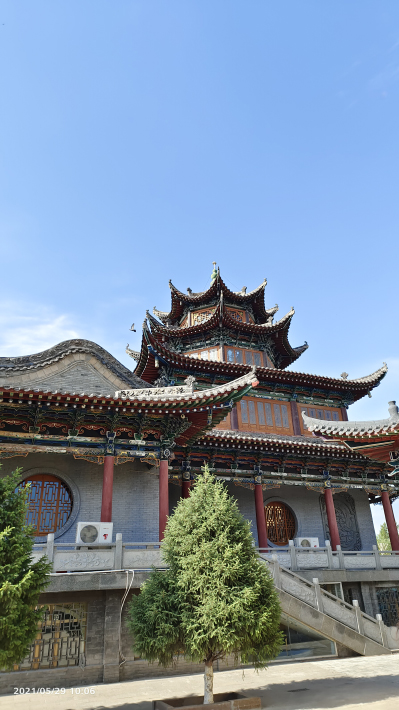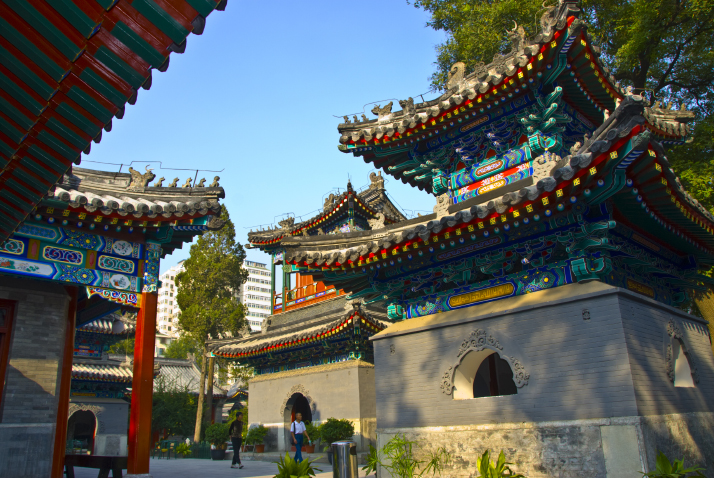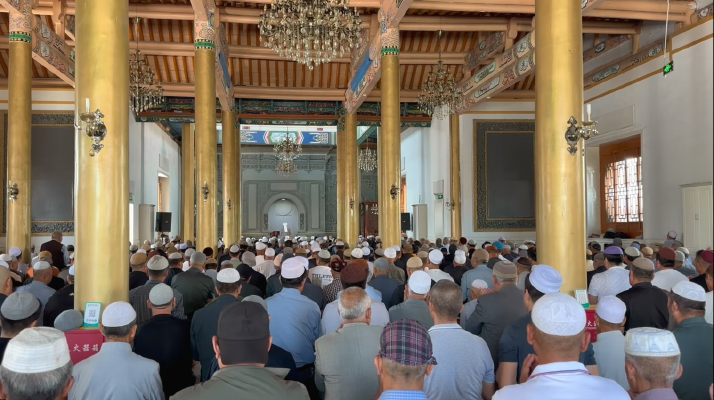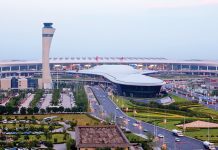
In an interview with Xinjiang Today, Ma Jirong, Imam of the Shaanxi Grand Mosque in Yining, capital of Ili Kazak Autonomous Prefecture, highlighted the mosque’s role as a historical testament to the localization and evolution of Islam within China’s multicultural framework. Ma is a council member of the China Islamic Association as well as vice president of the Xinjiang Uygur Autonomous Regional Islamic Association. He also discussed the architectural and cultural legacy of the mosque, alongside the religious practices of Xinjiang’s Hui community. Edited excerpts of the interview follow:

Xinjiang Today: As a historic site blending traditional Chinese and Islamic architecture, this mosque embodies a unique cultural synthesis. Can you share some insights into its origins, its role in shaping religious and communal life in Ili, and its broader significance?
Ma Jirong: The mosque has a history of over 270 years. The first Hui ancestors to settle in the Ili River Valley were recruited by the Qing Dynasty (1644-1911) government to quell a rebellion launched by the Junggar regime. These soldiers came from Shaanxi, Ningxia, Qinghai and other regions, which are provinces and regions in northwest China. After the conflict, many chose to stay, drawn by the valley’s fertile land and pleasant climate. Naturally, as Muslims, they needed a place to pray.
To meet these religious needs, the Qing government approved the construction of a large mosque. At the time, resources were scarce, so permission was granted to raise funds and grain from interior provinces like Shaanxi, Yunnan and Sichuan. This effort spanned over 20 years.
The construction was entrusted to three generations of Han craftsmen. While our Hui ancestors managed the fundraising, they lacked technical expertise. Though these craftsmen left no names, their dedication is evident in the mosque’s architectural style and structure. Their work created a magnificent building that has served our Muslim community’s religious needs for centuries. For Hui people from other parts of China, this mosque serves as a spiritual link to their hometown, akin to the Great Mosque in Huajue Lane, Xi’an, Shaanxi Province—originally built in 742 during the Tang Dynasty (618-907) and rebuilt in 1384 during the Ming Dynasty (1368-1644), or the Ping’an Mosque in Haidong City, Qinghai Province, a wooden structure dating back to the 18th or 19th century.

The mosque has undergone several renovations. Can you tell us more about the recent renovation?
The recent renovation required a total investment of over 10 million yuan ($1.4 million). The government allocated a portion of the funding, while the majority was contributed by members of our religious community. Some donations also came from Han visitors traveling through the region. Upon seeing the mosque, many inquired if they could support its preservation. We welcomed their goodwill as an act of spiritual merit, accepting their contributions with gratitude.
This collaborative effort reflects a shared commitment to safeguarding cultural heritage. The updates prioritized restoring traditional architectural elements—such as the carved wooden beams and painted motifs—while integrating modern safety and accessibility standards. These enhancements ensure the mosque remains both a functional space for worship and a living testament to the harmony between diverse communities in Xinjiang.

Can you share more about your personal journey as an Imam and how it intersects with the region’s evolving religious and cultural dynamics? What aspects of your daily life and spiritual traditions would you most like global audiences to understand?
Islam originated in Saudi Arabia and was introduced to China over 1,400 years ago. After reaching east China, it incorporated Chinese elements and later spread westward to our Ili region. This mosque, for example, is a typical Chinese palace-style mosque.
Our Hui ancestors practiced Islam, but tracing further back, the Hui ethnic group has Arab, Central Asian, Mongolian and Han Chinese lineage. The integration of these diverse backgrounds formed the unique Hui ethnic group.
My family has a long religious tradition. My great-grandfather was the renowned Imam Ma Liangjun, who served here from 1919 to 1938. My father dedicated nearly 50 years to the mosque, from 1963 to 2010, and I have continued since 2010. Living in China, and in Ili, Xinjiang, I feel very happy.
U.S. media often portray Muslim communities in Xinjiang as being discontent. If you could address the American public directly, what would you want them to understand about practicing Islam here?
In any society, religion or political group, total unanimity is impossible. Differences of opinion exist everywhere. Consider the U.S.: Even during presidential elections, some resort to violence, as seen in attacks against Donald Trump. Similarly, in Xinjiang, extremist ideologies once exploited the vulnerability of some well-meaning but misinformed Muslims, threatening both social harmony and national security.
Through the state’s governance in recent years, stability has been restored. Today, at our mosque, you see firsthand how China’s policies ensure the freedom of religious belief and protect ethnic minority rights. If you join us on a Friday, you’ll observe hundreds worshipping peacefully during Jummah prayers. This is the reality: Xinjiang’s people, including its Muslim communities, live with dignity, safety and the freedom to uphold their faith. –The Daily Mail-Beijing Review news exchange item





